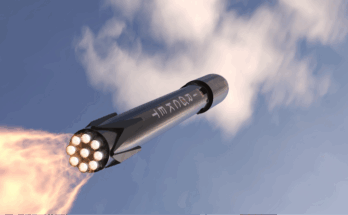By Ray Jaworowski, Senior Aerospace Analyst, Forecast International.
Utilizing data from its innovative Platinum Forecast System® 3.1, Forecast International projects that a total of 1,610 light military rotorcraft will be produced during the 15-year period from 2017 through 2031. The value of this production is estimated at $22.2 billion in constant 2017 U.S. dollars. In general, we define a military rotorcraft as light when it has a maximum gross weight of less than 6,804 kilograms (15,000 lb).
Production of light military rotorcraft has been on the upswing since 2014, rising from 160 units produced that year to 208 in 2016. The improvement cycle has continued into 2017: we expect 217 light military rotorcraft to be built this year. However, a decline in annual build rates is expected to set in as soon as 2018. The trend in annual unit production is projected to continue downward through 2023, when production of 73 rotorcraft is predicted. Afterward, though, some minor growth and longer-term stability is expected, with production rising to 87 units in 2024 and then remaining within a range of 75 to 87 units per year through at least 2030.
 Forecast International projections indicate that Airbus Helicopters will lead the light military rotorcraft market in unit production from 2017 through 2031, producing 420 units for a 26.1 percent market share. China’s Avicopter is expected to take second place, with production of 301 units for an 18.7 percent share. India’s Hindustan Aeronautics Ltd (HAL) is third on production of 257 units, representing a 16 percent share. Bell Helicopter is projected to be fourth, with production of 225 units for a 14 percent share.
Forecast International projections indicate that Airbus Helicopters will lead the light military rotorcraft market in unit production from 2017 through 2031, producing 420 units for a 26.1 percent market share. China’s Avicopter is expected to take second place, with production of 301 units for an 18.7 percent share. India’s Hindustan Aeronautics Ltd (HAL) is third on production of 257 units, representing a 16 percent share. Bell Helicopter is projected to be fourth, with production of 225 units for a 14 percent share.
After a period of decline, defense spending is starting to trend upward in the U.S. and various other countries, sparked by concerns over global and regional instability. At least in the short term, the effects of this rising defense spending on the light military rotorcraft market will be mixed. In the U.S., much of the near-term increase in defense spending will go to readiness and RDT&E accounts, rather than to procurement. The effects of increased defense spending on rotorcraft acquisition will be more apparent outside the U.S., where some countries could accelerate certain fleet modernization plans.
While North America and Europe are currently the two largest regional markets for light military rotorcraft, Asia will grow in importance as a regional market over the next 15 years. Manufacturers will also be able to find sales opportunities in Latin America, Africa, and the Middle East.
While military customers tend to favor medium/heavy rotorcraft, the incorporation of advanced systems and technologies has boosted the capabilities of many of the newer light rotorcraft models on the market, narrowing somewhat the capabilities gap between these machines and their medium/heavy counterparts. Mission flexibility and multirole capability are key selling points for military customers. Manufacturers promote the versatility of each of the products in their portfolios – from attack models to transport/utility types.
Beyond the 15-year forecast period, one or more new light rotorcraft could result from the U.S. military’s Future Vertical Lift (FVL) program. The goal of the FVL program is to develop and produce next-generation rotorcraft in at least five classes, called “Capability Sets,” that range from lighter to heavier weight classes and are aimed at various future U.S. military helicopter replacement needs. Each Capability Set is to involve one basic rotorcraft with possibly one or more variants thereof. Plans call for FVL rotorcraft to begin entering service in the early 2030s.
The Capability Set 1 (CS 1) platform is the smallest of the five planned FVL rotorcraft, and is to be used for reconnaissance, light attack and light transport missions. It would likely fill the armed scout role for the U.S. Army that was once performed by OH-58D Kiowa Warriors (and now by AH-64 Apaches and unmanned aerial vehicles). It would also probably replace various other light helicopters in U.S. military fleets.
Please feel free to use this content with Forecast International and analyst attributions, along with a link to the article. Contact Ray Peterson at +1 (203) 426-0800 or via email at ray.peterson@forecast1.com for additional analysis.
The Platinum Forecast System™ is a breakthrough in forecasting technology that enables you to select your own unique criteria to create distinct market segments. With Platinum, you can create customized assessments that quickly identify both risk and future opportunities. For a demo, please click HERE.
For 50 years, Forecast International intelligence reports have been the aerospace and defense industry standard for accurate research, analysis, and projections. Our experienced analysts compile, evaluate, and present accurate data for decision makers. FI's market research reports offer concise analysis of individual programs and identify market opportunities. Each report includes a program overview, detailed statistics, recent developments and a competitive analysis, culminating in production forecasts spanning 10 or 15 years. Let our market intelligence reports be a key part of reducing uncertainties and mastering your specific market and its growth potential. Find out more at www.forecastinternational.com



